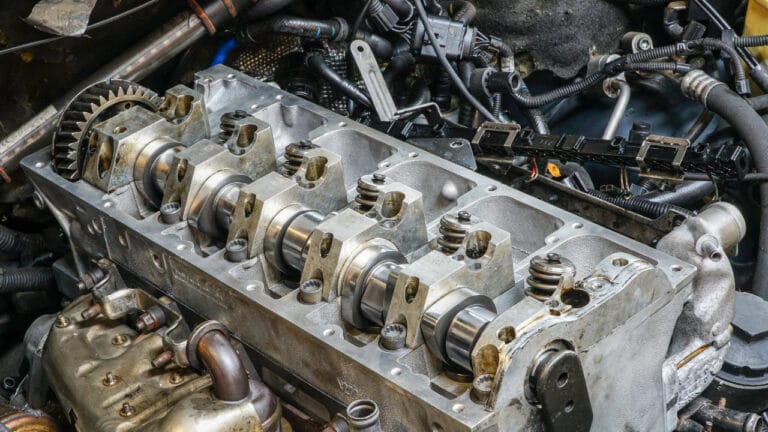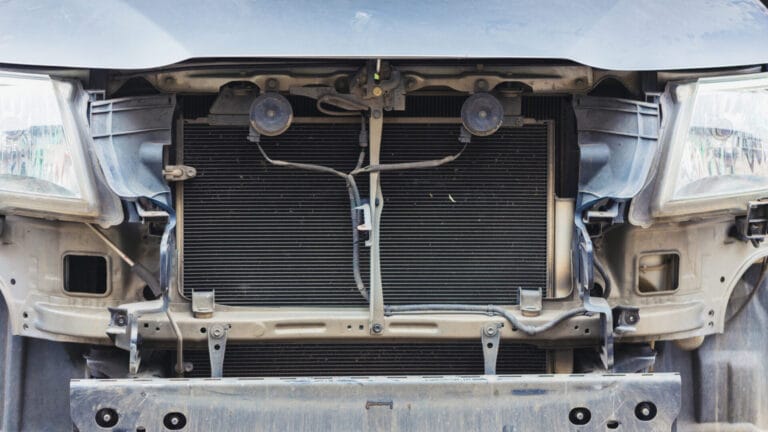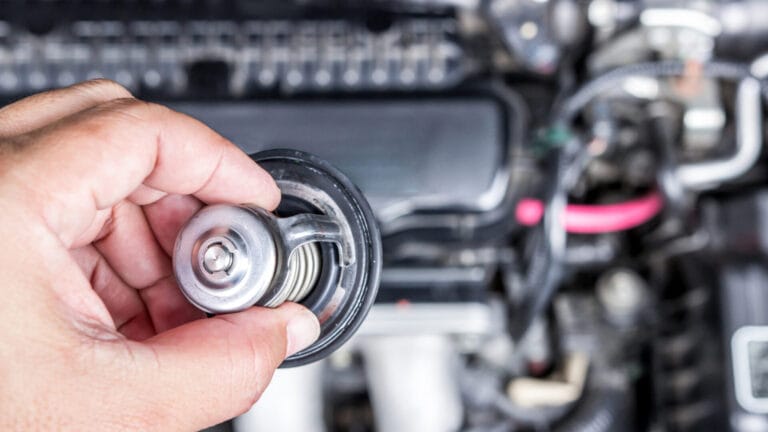Can You Drive Without a Radiator Cap? Is It Safe Find Out
So, your radiator cap is looking like it has seen better days. You spot coolant leaks when you park your car or worse, your engine is overheating a little. Even so, can you drive without a radiator cap?
Yes, you can drive without a radiator cap but only for a short distance. Even then your engine will be at a huge risk of seizure. Even though the radiator cap is only a small component, it keeps the pressure in the system in check. So, it’s no joke, and risking it wouldn’t be wise.
Keep on reading to learn more about what the radiator cap does and the dangers of driving without one.
What Does The Radiator Cap Of A Car Do?
The radiator cap seals the top of the radiator and regulates the pressure within the cooling system. This is the most basic of its functions but let’s take a deeper look at everything it does.
- Regulate Pressure of The Cooling System
The spring mechanism of the radiator cap pushes down in the radiator opening. This spring is set to a pressure setting in pounds per square inch (psi). The setting will differ based on your car’s model.
In case the pressure inside the cooling system is more than the setting, the cap’s valve opens to let out the pressure. If there’s a vacuum formation inside the system, the air is also let into the system through the cap as well. That’s how the pressure is constantly regulated.
- Increase The Boiling Point Of Coolant
When your car’s engine runs, the combustion produces a lot of heat. This heat is absorbed by the coolant and the coolant temperature rises. If the temperature of the coolant rises to the boiling point, it will evaporate and the cooling system will malfunction.
However since a high pressure is exerted by the radiator cap on the coolant, its boiling temperature increases. Making the coolant much more effective at absorbing heat.
- Acts As A Safety Valve
As we’ve already mentioned, the pressure inside the cooling system can sometimes exceed the ideal rating. In that case, your radiator and other car components are at risk of damage and malfunction due to excess pressure.
The radiator cap acts as a safety valve and lets out excess hot air and vapor to keep the pressure in check. This way the engine and other components are safe.
- Topping Up & Refilling Coolant
This is a pretty obvious use of the radiator cap, you can unscrew it to add coolant to the cooling system. It’s the point where you can top up or refill coolant as needed.
- Physical Barrier Between The Elements & Cooling System
The radiator cap acts as a seal to the cooling system. That way, dirt, debris, foreign elements, and contaminants can’t enter the cooling system and cause damage.
What Will Happen When You Drive Without A Radiator Cap?
Now that you know what the radiator cap actually does, you will have an easier time understanding why you shouldn’t drive without it. Here’s what will happen in the absence of a radiator cap.
- Low Pressure Inside Cooling System
Since the main function of the radiator cap is to maintain pressure inside the cooling system, without it, pressure will likely lower. Whatever pressure is calibrated in the spring, it won’t be maintained.
- Coolant Loss
Higher pressures lead to higher boiling points. Without high-pressure levels, the boiling point of the coolant will be lower. Due to this, coolant will convert to vapor and overflow the cooling reservoir.
There will be a considerable loss in the coolant level. This is going to reduce the power of heat absorption of the cooling system.
- Air Entering The Cooling System
As the cooling system is separated from the outside environment through the radiator cap, without the cap, air can enter the coolant system. This creates air pockets in the coolant channel leading to lower coolant circulation.
- Overheating
With lower heat absorption from the engine’s combustion system, due to coolant loss and other factors, your engine may overheat.
This is a very common sign of something being wrong with your cooling system. So, if you don’t do something about your radiator cap, the cooling system will very likely overheat.
- Engine Lock Up
Overheating causes an increase in friction and warps the engine components due to metal expansion. This can lead to serious engine damage and even seizures.
How to Check If Radiator Cap is in Place
You need to locate the radiator cap on your engine to be able to tell whether it’s installed properly and good to go. Here’s what you need to do.
- Make sure your engine is cool before proceeding.
- Locate the radiator cap at the front of the engine. It will have written on it, ‘There is a pressurized fluid’ as a warning. You should also notice the radiator plugs next to it.
- Inspect the cap and ensure there’s no physical damage to it.
- To check for pressure inside the system, rotate the radiator cap counterclockwise while pressing down. If you feel resistance, the pressure is good.
- Make sure you tighten the radiator cap in place. You need to rotate it clockwise to screw it in place. Read the labels on the cap for any specific instructions.
Note: You can watch the following video to get a clearer idea of the process.
How to Replace Radiator Cap
Replacing a radiator cap is the easiest. You don’t need to have any knowledge of fixing cars to do this. Here’s what you need to do:
- The main challenge is getting the right radiator cap model. So, you need to read the specifications of your previous radiator cap to get the same one or find a similar one that will fit.
- The radiator cap is located at the top of your radiator, at the front of the engine. You should spot it easily as it’s also close to the radiator hose.
- Press the flat of your palm down on the radiator cap. Use just the flat of your palm to twist the radiator cap to the left or anticlockwise. You will need to move your elbow and body as you do this task.
- Once it’s unscrewed, the new one goes in. Turn the new radiator cap around. You should spot two tabs on it and there are two gaps in the neck of the radiator filler. Position the tabs onto these gaps and twist the cap in the same way as before. This time in the clockwise direction.
- When the cap doesn’t twist to the right anymore, you will know it’s secured into place.
Final Words
To sum up, can you drive without a radiator cap? Technically, yes, but it can damage your engine severely in a short time. So, it’s best never to do that. The worst effect of driving without a radiator cap can be low pressure, a loss of coolant, air in the coolant system, overheating, and even engine lockup.
To avoid this situation, you should quickly replace your radiator cap. It’s very easy to do, but make sure your new radiator cap is suitable for your car model. Check the specifications written on your old radiator cap to get the right specs.






